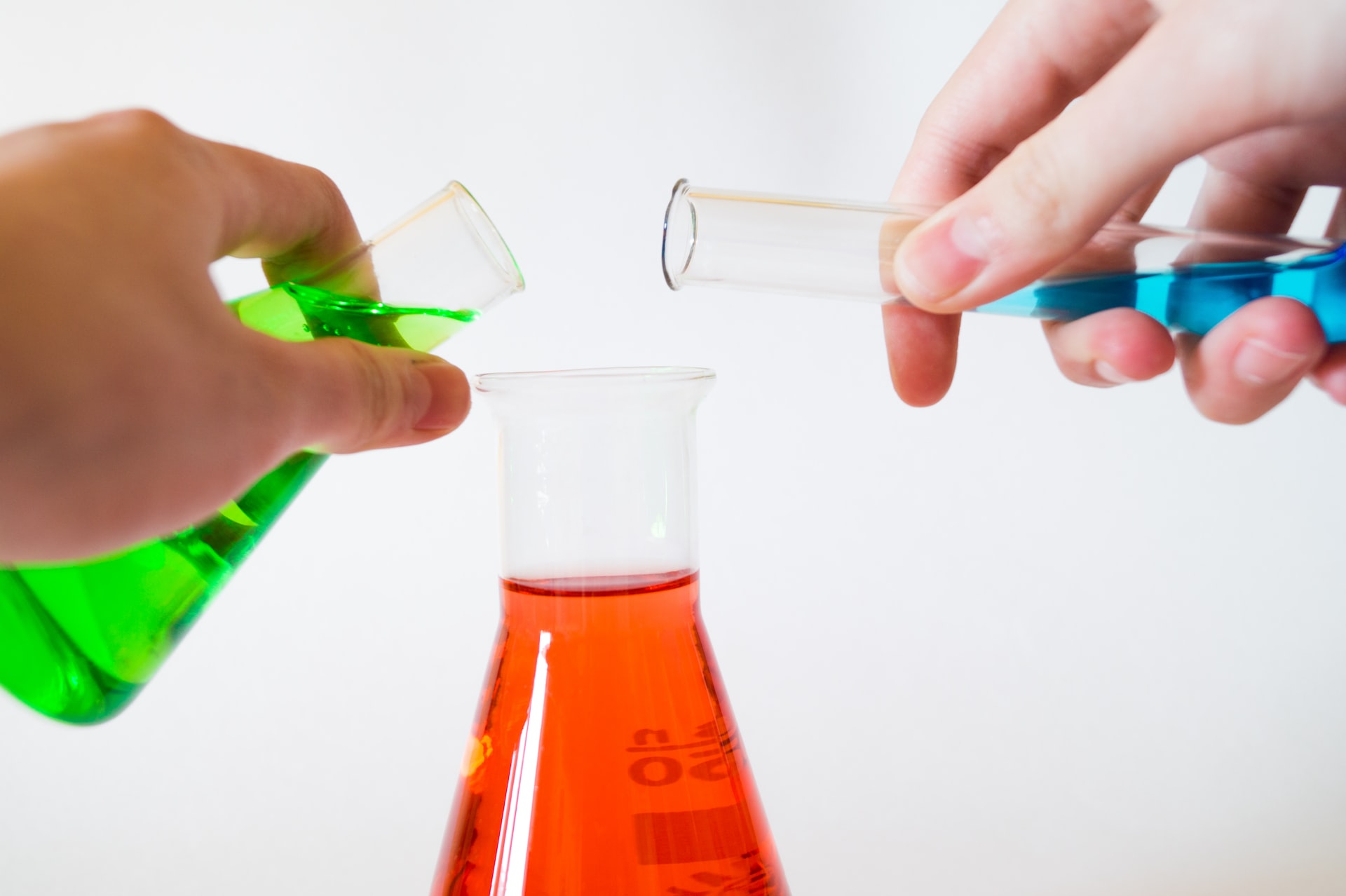



We use the different elements of the periodic table every single day without even realizing it. Oxygen and hydrogen make up the water you drink. Oxygen and nitrogen make up the air you breathe. The various metals make up everything from the silverware you eat with to pieces of the car you drive. Today, we’re going to take a closer look at halogen properties. What are halogens, and where might you encounter them in your daily life?
There are six elements in the halogen group, but they’re very rarely found in their pure form in nature. These elements are very reactive, so when they’re found in nature, it’s usually in the form of compounds or as ions. The six are:
| Solids | Liquids | Gases | Too Rare to Tell |
|---|---|---|---|
| Iodine | Bromine | Fluorine | Tennessine |
| Astatine | Chlorine |
Fluorine and chlorine are fairly abundant in the Earth’s crust. Iodine and bromine are rarer. Scientists consider astatine one of the rarest naturally occurring elements. On the other hand, scientists artificially created Tennessine.
Each of these elements has similar chemical and physical properties. Halogen properties are identified by their outer shell — each halogen element has seven valence electrons in its outer shell. In their pure form, you’ll never find a single atom of a halogen element. They’re all found as diatomic molecules — two atoms of the element — or bonded with another element.
Each of these elements will also form acids when combined with hydrogen. Unlike some of the other elemental groups, halogens span all three states of matter. Iodine and astatine are found as solids, bromine is found as a liquid, and fluorine and chlorine in their natural state are gasses.
Tennessine is a bit difficult to classify because it was created in a lab, so there have only been a few atoms created at any given time, and the element has a half-life of only around 80 milliseconds.
Where can you find the halogen elements in your daily life? The nature of halogen properties makes them hard to find alone, but common diatomic molecules of each element can easily found in a lot of different places. You can find them in the water you drink, the pools you swim in, and the salt you use to season your food.
Fluorine is a bit of an elemental problem child. It’s the most reactive element on the periodic table, bonding with anything that gets close enough to swap electrons. It also refuses to let go of any of its ill-gotten gains. No chemical on the planet can separate fluorine from any of its compounds. This reactivity means you’ll never find pure elemental fluorine in nature.
There are plenty of applications for this problematic element, and you’ve likely encountered a couple of them in your daily life.
Chlorine is another element that happily bonds with nearly anything that crosses its path, though it isn’t as reactive as fluorine. The element dates back to the late 1700s, and most of the chlorine we use today comes from the oceans via electrolysis.
You’ll find chlorine in all sorts of different products — many of which you probably have in your home right now.
Bromine gets its name from the Greek word bromos, which means stench. This element is liquid at room temperature and has an incredibly noxious smell. It’s a dangerous substance, causing chemical burns if it comes into contact with your skin. It will also evaporate at room temperature, creating a halogen gas that will irritate the eyes and lungs.
Iodine, on the other hand, was another accidental discovery. A chemist was trying to remove sodium and potassium from seaweed. Adding too much sulfuric acid to the compound released a cloud of purple gas that, when condensed, contained elemental iodine.
Astatine is so incredibly rare in nature that scientists estimate only 30 grams exist at any given time. It forms when thorium and uranium decay.
Tennessine doesn’t occur naturally, but it is highly radioactive. It has an extremely short half-life — around 80 milliseconds — so you won’t find it in your daily life. Outside of laboratory settings, there are no practical uses for either of these elements.
Besides knowing how halogen affects daily life, you may also want to learn about how halogen trends shape scientific progress. Knowing about these examples can inspire you with reminders that forward-thinking scientists are always looking for new ways to solve problems and make improvements.
In one case, researchers familiar with halogen properties used chlorine-based processes to enhance a metal-recycling process, making it more sustainable and addressing a known need. The team turned their attention to electronic waste, hoping to find a viable solution for extracting valuable metals from it. Current methods are energy-intensive, require substantial acid use and create new waste streams. However, the researchers’ alternative is a temperature-controlled method that works quickly and reduces the potential environmental harm.
Another instance involved a group addressing an issue associated with flowless zinc-bromine batteries, which could become a safer alternative to lithium-ion batteries. A downside of these power sources is that the zinc-bromine varieties can self-discharge, making them less applicable in real life. However, scientists developed a new electrode that can suppress the discharging effect. The team believes this innovation could make zinc-bromide batteries more applicable to emerging applications. For example, these power sources could become part of the battery-storage systems that keep renewable energy readily available when needed.
These examples highlight the importance of halogen properties and understanding how people could apply them to meet new or still unmet needs. Scientific advancement is not necessarily about starting from scratch but understanding what people have tried before and staying committed to goals. Such dedication can lead to halogen trends that reach news headlines and fascinate people.
The halogen group might not be as common as some of the other element groups, but these elements are an essential part of the world around us, and many of them are the basis for things like the bleach in your laundry room or the toothpaste in your bathroom. You might not encounter them in their pure form, but in the case of things like fluorine and chlorine, that’s not a bad thing. If you’ve got iodine in your first aid kit, you’ve encountered halogens in your daily life.


This site uses Akismet to reduce spam. Learn how your comment data is processed.